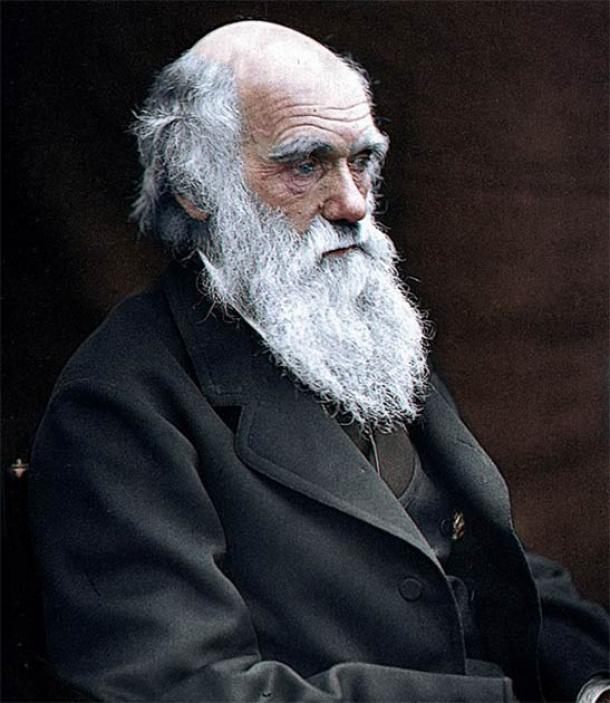In 1879 Charles Darwin wrote a letter to his close friend, the botanist and explorer named Dr. Joseph Hooker. He expressed his annoyance at the puzzling mystery of how the first flowering plants evolved. He wrote to Dr. Hooker “The rapid development as far as we can judge of all the higher plants within recent geological times is an abominable mystery.” Now it appears that one of the mysteries which baffled Charles Darwin about flowering plants has been solved.
If somehow you’re unfamiliar with the name, Charles Darwin was a British naturalist who lived from 1809-1882. He’s most famous for his theory of evolution which is based on natural selection and the book On the Origin of Species.

Charles Darwin. (Julius Jääskeläinen/ CC BY 2.0 )
Charles Darwin and the Vexing Mysteries of Flowering Plants
The story of the sudden rise and spread of flowering plants is still filled with mystery. Professor Richard Buggs, an evolutionary biologist at Queen Mary, University of London, told BBC News “In the fossil record they appear very suddenly in the Cretaceous, dated at about 100 million years ago, and there’s nothing that looks like an angiosperm [plant that produces flowers and bears seeds in fruit] before them and then they suddenly appear and in considerable diversity.”
Professor Buggs provided his explanation why Charles Darwin coined the phrase “an abominable mystery” in a paper published in the American Journal of Botany . He has also explained why Charles Darwin was so concerned with trying to solve the evolutionary story of flowering plants. He said that Darwin was afraid that his inability to solve the puzzle could undermine his other theories about evolution in the eyes of his critics.
Charles Darwin was also facing the challenge of a rival scientist who claimed that God played a role – that divine intervention explained the rise of flowering plants .
“The mystery seems to have been made particularly abominable to him by its highly publicised use by the keeper of botany at the British Museum to argue for divine intervention in the history of life,” Professor Buggs said.
Unfortunately that mystery remains. According to Professor Buggs, “One hundred and forty years later, the mystery’s still unsolved. Of course, we’ve made lots of progress in our understanding of evolution and in our knowledge of the fossil record , but this mystery is still there.”
One of Darwin’s Flower Mysteries is Finally Solved
However, Charles Darwin could be proud of a team of researchers at UC Santa Cruz, in Santa Cruz, California, USA, who have unraveled the mystery of why some plants have two different sets of anthers. Anthers are the part of a flower’s reproductive organ, the stamen, and they contain the pollen.
Flowering plants generally rely on bees and other pollinators to help them reproduce, as the pollinators move the pollen from the male anthers of one plant to the female stigma of another plant. However, pollen is food for bees, and if they have enough they’re more likely to forget going to another flower – they’ll go home to feed their offspring instead.

A Hesperapis regularis bee visits a flower of Clarkia cylindrica at Pinnacles National Park. (Photo by Tania Jogesh )
Kathleen Kay, associate professor of ecology and evolutionary biology at UC Santa Cruz, states that this is why “plants have evolved ways to optimize the behavior of bees to maximize the transfer of pollen between flowers.” This is where the two distinct sets of anthers (referred to in botany as heteranthery) comes in.
A UC Santa Cruz press release states that Darwin was baffled with the flowers that had two sets of anthers and he lamented in a letter that he had “wasted enormous effort over them, and cannot yet get a glimpse of the meaning of the parts.” But the UC Santa Cruz research team has found an answer, which they have published in Proceedings of the Royal Society B .
The team found an explanation for heteranthery in wildflowers in the genus Clarkia. They showed that this feature allows the plants to “pollen dose” bees. “What’s happening is the anthers open at different times, so the plant is doling out pollen to the bees gradually,” Kay said. Since the bees only get a little pollen at a time they are more likely to move on to another flower before grooming it off their legs and heading back to their nest. Kay explained:
“If a flower doses a bee with a ton of pollen, the bee is in pollen heaven and it will start grooming and then go off to feed its offspring without visiting another flower. So plants have different mechanisms for doling out pollen gradually. In this case, the flower is hiding some anthers and gradually revealing them to pollinators, and that limits how much pollen a bee can remove in each visit.”

Close-up photos of clarkia flowers show the two types of anthers, a conspicuous inner whorl and an outer whorl that blends in with the petals. (Image credit: Kay et al., PRSB 2020 )
Charles Darwin May Have Been on the Right Path
The UC Santa Cruz press release states that when Kay began her studies on heteranthery she realized how time consuming this research could be and “how much time Darwin had spent puzzling” over it.
However, Kay thinks that Charles Darwin may have been on a similar path of discovery as her and her team. Apparently, shortly before his death he made the request for C. unguiculata seeds to use in experiments. If his life had been a little longer, who knows what he may have found?
Top Image: Charles Darwin ( pict rider /Adobe Stock) was puzzled by flowering plants. ( Pixabay License )
Related posts:
Views: 0
 RSS Feed
RSS Feed

















 January 24th, 2021
January 24th, 2021  Awake Goy
Awake Goy  Posted in
Posted in  Tags:
Tags: 
















